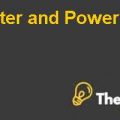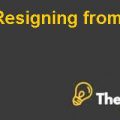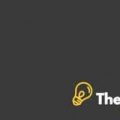HCA, Inc. Case Solution
Senior Management Pursuing LBO:
Leveraged buyout is the acquisition of the company that uses a significant amount of borrowed money to meet the cost of acquisition. In the leveraged buyout, the assets of the company acquired are used as collateral for the loans. The main purpose of leveraged buyout is to make the large acquisitions without committing a lot of capital. In the leveraged buyout, the usual ratio of debt to equity is 90%.

inc case
solution" width="288" height="288" /> hca inc case solutionThe higher management of HCA is pursuing the leveraged buyout due to several reasons. HCA has struggled with the increasing number of uninsured patients and the resulting bad debt expense. The pace of the bad-debt expense has increased over the previous years due to which the management has lowered its forecast for the current quarter and also for the next years.
Current Performance:
The net income of the HCA for the year ending is $1.4 billion, which has increased from $1.2 billion in the previous year.
The revenue of the company is distributed between the numbers of services with 36% revenue related to the Medicare, 10% related to the Medicaid, and 49% of the revenue is associated with managed care and other insurers.
HCA has struggled in the recent years to meet the expectations from the earning point of view. The company has missed the earnings forecasts in eight out of the previous thirteen quarters and
The current performance of the company also shows that it might be difficult for HCA to meet the earning forecast of the current year. The expected earning per ratio of the company is around $0.78 in the current quarter however, the estimated earning per ratio of the management for the quarter is $0.72.
The current shortfall in EPS will affect the annual result of the current year and also the next year. The forecasted EPS by the analysts is around $3.15 but the management forecast for the EPS is around $2.99 in 2006 and $2.88 in 2007, which is more troubling than the current year.
Performance Driving Down Factor:
The main factor in the deterioration of the company’s performance is the increase in the bad-debt expense due to which the current performance and the forecast of the company has been affected. The provision for the doubtful debt has increased from 11.4% to 12.4% of revenue in 2005. The increase is related to the increase in the number of patient co-payments under the managed-care plans, increase in the uninsured emergency room visits, and increase in the uninsured admissions.
Role of Involved Parties in the Transaction:
The first advice on the strategic alternatives was taken by Merril Lynch. HCA consulted with Merril Lynch to explore the strategic alternatives, which recommended the management to explore the leveraged buyout and provided the price which HCA should consider which is a premium of 20% to 28% on the current share price of HCA.
Once the management of HCA decided to go for the leveraged buyout, McKinsey reported that the management’s projections are overly projected and provided with the lower projections. However, the first offer from the private equity firms was rejected. The price suggested by the Merril Lynch was based on those management projections, which show that the price suggested was higher than what HCA could get for each share.
The Board of Directors of HCA retained McKinsey and the company with which the management had worked before and it also has the relevant experience in the health care industry to analyze the projections of the management. McKinsey studied the five factors for the profitability of HCA which included..................
This is just a sample partial case solution. Please place the order on the website to order your own originally done case solution.













